How the World War One Poppy Sculpture - Wave - Affected the UK

Poppies and Sculpture
The poppy sculpture Wave has attracted many thousands of visitors since it was first created and displayed in Great Britain. People find the scarlet flowers a highly emotional symbol especially given the personal family connections - many lost loved ones in what is known as the Great war.
In the UK and around the world, poppies are a powerful symbol for those soldiers and others who died in World War 1. Each poppy represents a life, red for the blood sacrificed, the flower itself a reminder of the transient nature of human existence.
Each year at the end of the Remembrance Service held at the Albert Hall, London, many thousands of poppies fall from the ceiling, like red snow, to land in the hair and on the helmets and shoulders of those attending.
It's a poignant piece of quiet drama which reinforces just how important those lost lives were and are.
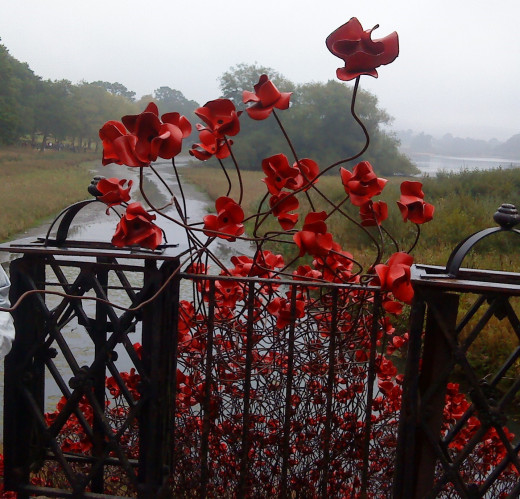
The Wave
I went along to see the sculpture for myself. It was on special display at the nearby Yorkshire Sculpture Park, a world class venue where many of the top artists exhibit.
But this installation was somehow different. This sculpture meant so much to so many. I wrote:
'The red wave of poppies becomes apparent as you reach the lakeside path and look up towards the bridge of the historic Lower Lake. Poppies sweep down into the water and the reeds, like a spillage of blood. These flowers signify the sacrifice of so many, those who gave their lives in what was to become known as the Great war.
Many millions from across the globe were killed, the majority young men. They gave the ultimate, many fighting and dying in the trenches of France and Belgium, often enduring horrific conditions.'
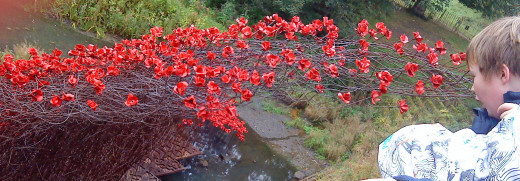
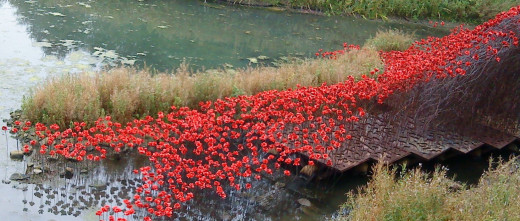
The artists involved are Paul Cummins and designer Tom Piper, both British. The work aims to give the public a chance to think about the affects of World War 1 and to create a dialogue. It's notable just how many people have been to see this installation; without doubt it's caught the imagination of the British public.
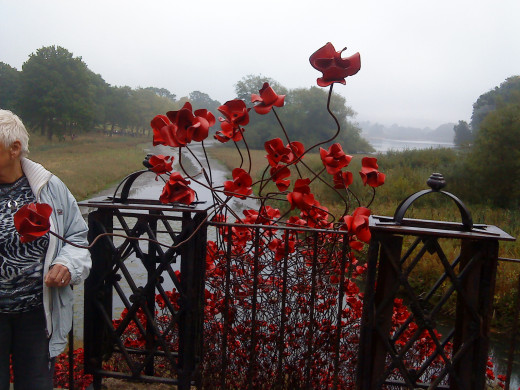
The Simple Poppy Flower
When the war was over and the fighting ended, in 1918, the battlefield areas of northern France had lost virtually all natural life. The soil had become so churned up, so pitted and so terrorised, plant life struggled to germinate. Only the corn poppy (Papaver rhoeas), a pioneer species, seemed to thrive.
Corn poppies love disturbed earth and grew quickly in the warm spring season that followed the end of hostilities. Vast areas gradually turned scarlet red, the only dark patches were where the fallen had been recently buried.
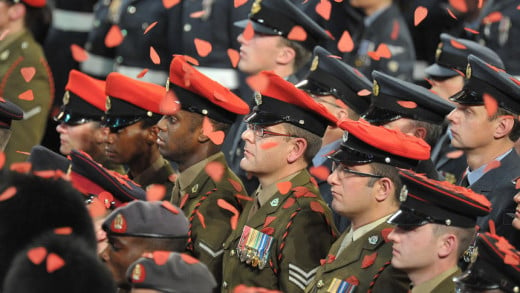
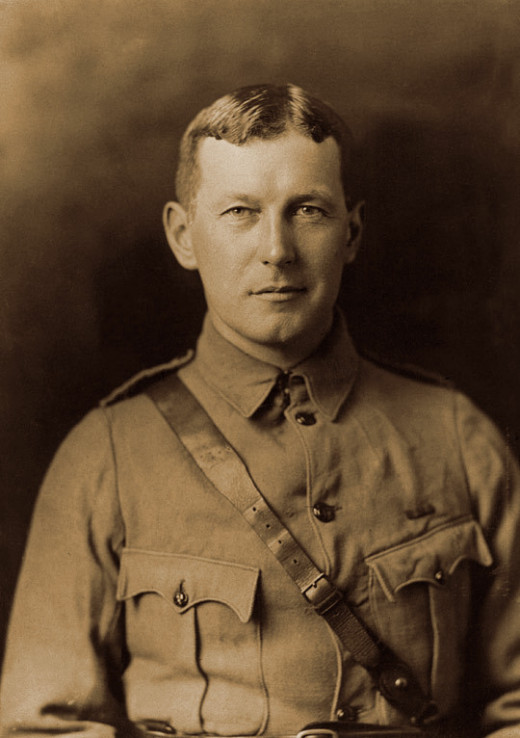
The Poem
Canadian soldier and surgeon John McCrae was so moved by the sight of the poppies that he wrote a poem, In Flanders Fields, also titled We Shall Not Sleep.
The last line of that poem reads, We shall not sleep, though poppies grow in Flanders fields.
This poem inspired two women in particular - Moina Michael, from Georgia in the United States, and Anna Guerin from France. Both were keen to help those who had fought and returned home from the Great War but equally they developed the idea of the poppy as a lasting symbol for the dead.
The first artificial memorial poppies were sold on the 9th November 1918, a couple of days before Armistice day, the official end of the war.
This idea, of wearing a poppy on the lapel to show support for the war dead, soon grew. Anna Guerin started to produce poppies in France and took them all over the world.
In 1921 the Royal British Legion, a charity formed to help needy soldiers, began the first poppy appeal, producing artificial poppies for a few pennies so people could wear them in remembrance.
This tradition continues.
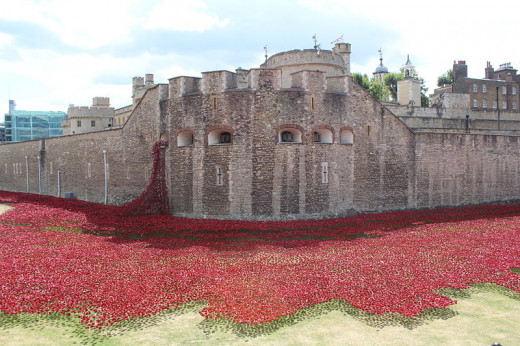
Influences
The Wave installation was inspired by an earlier work created at the Tower of London in November 2014. This was called Blood Swept Lands and Seas of Red, built by the same artists.
Over 5 million people came to see this impressive sculpture, overwhelming the organisers.
Each ceramic poppy in this work was 'planted' by a volunteer in memory of a life lost in the first world war. At the end of the exhibition some of the poppies were sold.
Useful Links
The American Legion: www.legion.org
The American Legion Auxiliary Poppy Program: www.legion-aux.org
New Zealand Returned and Services' Association (NZRSA): www.rsa.org.nz
Poppyscotland Poppy Appeal: www.poppyscotland.org.uk
The Royal British Legion: www.britishlegion.org.uk
Royal Canadian Legion Poppy Campaign: www.legion.ca
Veterans of Foreign Wars Buddy Poppy Program (USA) www.vfw.org
© 2015 Andrew Spacey








